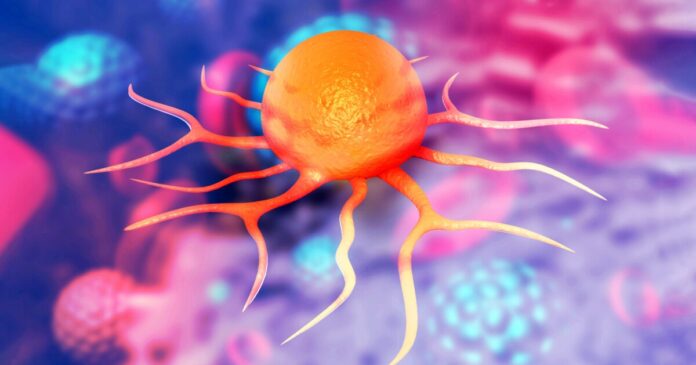In a world-first breakthrough, scientists have discovered how a sugary “cloak” helps bowel cancer hide from the immune system, and how stripping it away could turn the body’s anti-cancer defenses back on.
Bowel tumors are made up of more than cancer cells. They also contain stromal cells, normal support cells that help build the tumor’s structure. In aggressive bowel cancers, these stromal cells are found in large numbers and have a strong influence over how the immune system behaves.
In a new study led by the University of Galway, Ireland, researchers have looked at why some bowel cancers can evade the immune system and resist treatments like immunotherapy, and found that a kind of “sugar coating” on stromal cells within a tumor plays a key role in shutting down immune attack. Importantly, they found that removing or blocking this coating reawakened immune defenses.
“While immunotherapy has revolutionized care in cancers such as melanoma and lung cancer, it has shown very limited benefit in bowel cancer, leaving patients with advanced disease with few treatment options and poor survival outcomes,” said corresponding author Professor Aideen Ryan, Professor in Tumor Immunology at the University’s College of Medicine, Nursing and Health Sciences.
Sialylation is the addition of sugar molecules called sialic acids to a cell’s surface. These sialic acids act like a “sweet disguise,” helping cells communicate but also, in the case of cancer, helping tumors hide from the immune system. When too many sialic acids are added, a condition called hypersialylation, the tumor effectively cloaks itself from immune cells like macrophages (which eat harmful cells) and natural killer (NK) cells (which destroy infected or cancerous cells).
Using bowel cancer tissue samples and mouse models, the researchers compared normal and cancerous tissues and tested what happened when they altered sialylation. This was done in two main ways. The first method blocked a sialylation enzyme, ST6GALNAC6, which adds sialic acids to cells. The second method removed sialic acids using enzymes called sialidases. Then they observed how immune cells reacted in the lab and in living mice when this “sugar shield” was taken away.
The researchers found that tumor stromal cells are heavily sugar-coated, with much higher levels of sialic acids than regular cancer cells. This hypersialylation was linked to worse survival outcomes for patients. Macrophages and NK cells exposed to these sugar-coated stromal cells produced more Siglec-10, a receptor that suppresses immune activity, and became inactive or “tolerant” instead of attacking the tumor.
When sialic acids were removed or when ST6GALNAC6 was blocked, macrophages regained their ability to engulf and destroy cancer cells. NK cells became more aggressive again, producing attack proteins. Additionally, tumor growth slowed, cancer spread (metastasis) was prevented, and immune activity increased throughout the body. The effect was reversible and potentially treatable. By targeting the sialic acid/Siglec axis – the interaction between the sugary cell coating and the immune “off switches” – the researchers could restore anti-tumor immunity in lab and animal models.
“Our research is a clear breakthrough in our understanding of bowel cancer and how immunotherapy could be more successful,” Ryan said. “This world-first findings shows that some of the bowel cancer cells are not just passive bystanders, they are actively reprogramming the body’s immune cells, preventing them from doing their job. We have uncovered an entirely new checkpoint and by focusing on it we can reactivate the immune system and improve our body’s ability to fight the disease, and even target metastasis.”
Of course, the findings need to translate from lab and animal models to humans, but they’re very promising. Many bowel cancer patients don’t respond to current immune-boosting therapies, so combining them with treatments that block sialylation could make immunotherapy more effective. The research has also identified that ST6GALNAC6 and Siglec-10 are promising new drug targets.
The study was published in the Journal for ImmunoTherapy of Cancer.
Source: University of Galway


